
A castle is a type of fortified structure built during the Middle Ages predominantly by the nobility or royalty and by military orders. Scholars usually consider a castle to be the private fortified residence of a lord or noble. This is distinct from a mansion, palace and villa, whose main purpose was exclusively for pleasance and are not primarily fortresses but may be fortified. Use of the term has varied over time and, sometimes, has also been applied to structures such as hill forts and 19th- and 20th-century homes built to resemble castles. Over the Middle Ages, when genuine castles were built, they took on a great many forms with many different features, although some, such as curtain walls, arrowslits, and portcullises, were commonplace.

Miramare Castle is a 19th-century castle direct on the Gulf of Trieste between Barcola and Grignano in Trieste, northeastern Italy. It was built from 1856 to 1860 for Austrian Archduke Ferdinand Maximilian and his wife, Charlotte of Belgium, later Emperor Maximilian I and Empress Carlota of Mexico, based on a design by Carl Junker.

Japanese architecture has been typified by wooden structures, elevated slightly off the ground, with tiled or thatched roofs. Sliding doors (fusuma) and other traditional partitions were used in place of walls, allowing the internal configuration of a space to be customized for different occasions. People usually sat on cushions or otherwise on the floor, traditionally; chairs and high tables were not widely used until the 20th century. Since the 19th century, however, Japan has incorporated much of Western, modern, and post-modern architecture into construction and design, and is today a leader in cutting-edge architectural design and technology.

Nagoya Castle is a Japanese castle located in Nagoya, Japan.

The Watts Towers, Towers of Simon Rodia, or Nuestro Pueblo are a collection of 17 interconnected sculptural towers, architectural structures, and individual sculptural features and mosaics within the site of the artist's original residential property in Watts, Los Angeles. The entire site of towers, structures, sculptures, pavement and walls were designed and built solely by Sabato Rodia, an Italian immigrant construction worker and tile mason, over a period of 33 years from 1921 to 1954. The tallest of the towers is 99.5 feet (30.3 m). The work is an example of outsider art and Italian-American naïve art.

Bratislava Castle is the main castle of Bratislava, the capital of Slovakia. The massive rectangular building with four corner towers stands on an isolated rocky hill of the Little Carpathians directly above the Danube river in the middle of Bratislava. Because of its size and location, it has been a dominant feature of the city for centuries.

Marienberg Fortress is a prominent landmark on the left bank of the Main river in Würzburg, in the Franconia region of Bavaria, Germany. The mighty Fortress Marienberg is a symbol of Würzburg and served as a home of the local prince-bishops for nearly five centuries. It has been a fort since ancient times. Most of the current structures originally were built in Renaissance and Baroque styles between the 16th and 18th centuries. After Gustavus Adolphus of Sweden conquered the area in 1631 during the Thirty Years' War, the castle was reconstructed as a Baroque residence. After it ceased to serve as residence of the Bishops of Würzburg, the fortress saw repeated action in the wars of the late 18th and 19th centuries. Festung Marienberg was severely damaged by British bombs in March 1945 and only fully rebuilt in 1990. Today, it houses two museums.

The Forestiere Underground Gardens in Fresno, California are a series of subterranean structures built by Baldassare Forestiere, an immigrant from Sicily, over a period of 40 years from 1906 to his death in 1946. The gardens are operated by members of the Forestiere family through the Forestiere Historical Center, and can be considered a spectacular and unconventional example of vernacular architecture.
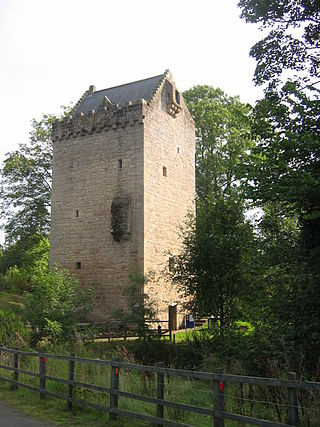
A tower house is a particular type of stone structure, built for defensive purposes as well as habitation. Tower houses began to appear in the Middle Ages, especially in mountainous or limited access areas, to command and defend strategic points with reduced forces. At the same time, they were also used as an aristocrat's residence, around which a castle town was often constructed.
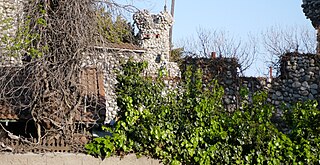
Rubel Castle was established in Glendora, California, by Michael Clarke Rubel and is owned and operated by the Glendora Historical Society.
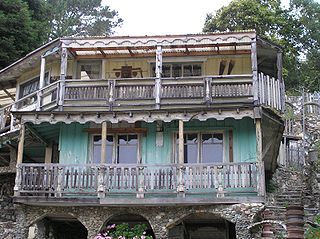
Nitt Witt Ridge is a house on two and a half acres in the coastal city of Cambria, California, United States. Artist and recluse Arthur "Art" Harold Beal (1896–1992) bought his hillside lot in 1928 and spent most of the next 50 years carving out the terraces with only a pick and shovel, creating his own "castle on a hill".

The Swallow's Nest is a decorative castle located at Gaspra, a small spa town between Yalta and Alupka on the Crimean peninsula. It was built between 1911 and 1912, on top of the 40-metre-high (130 ft) Aurora Cliff, in a Neo-Gothic design by the Russian architect Leonid Sherwood for the Baltic German businessman Baron von Steingel.

Herzliya Pituach is an affluent beachfront neighbourhood in the western part of the city of Herzliya, Israel, in the Tel Aviv District. Established in 1925, it has about 10,000 residents. Home to many wealthy Israelis, it is known for its hotels, restaurants and high-tech industry, and has the largest marina in Israel. It is considered one of Israel's most prestigious neighbourhoods.

Somali architecture is the engineering and designing of multiple different construction types such as stone cities, castles, citadels, fortresses, mosques, temples, aqueducts, lighthouses, towers and tombs during the ancient, medieval and early modern periods in Somalia and other regions inhabited by Somalis, as well as the fusion of Somalo-Islamic architecture with Western designs in contemporary times.

Bellesguard, also known as Casa Figueres, is a modernist manor house designed by Catalan architect Antoni Gaudí, which was constructed between 1900 and 1909.
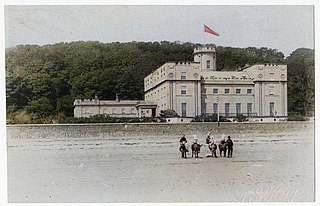
Castle Mona is a former private residence later used as a hotel in Douglas, Isle of Man. The house was built between 1803 and 1804 for John Murray, 4th Duke of Atholl during his capacity as the Isle of Man's Governor General. Before 1850, Queen Victoria proposed buying it as a more suitable royal residence than Osborne House.
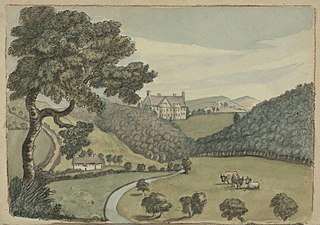
Llandough Castle is a 14th-century tower house located in the Vale of Glamorgan, South Wales. Initially constructed as a fortified residential manor, the property is well preserved and has undergone many structural additions. It is currently a private residence, though the surrounding castle gardens, renovated and opened in 2018, are a notable public attraction. Llandough Castle was assigned Grade II* listed building status in 1981.

Giv'at Olga is a neighborhood of the Israeli city of Hadera. It was named after Olga Hankin, the wife of the Zionist activist Yehoshua Hankin. It was founded in 1949 around the house Hankin built known as Olga Hankin's House.
Nissim Kahlon or Cachlon is an Israeli hermit who created the Hermit House in Herzliya.


















